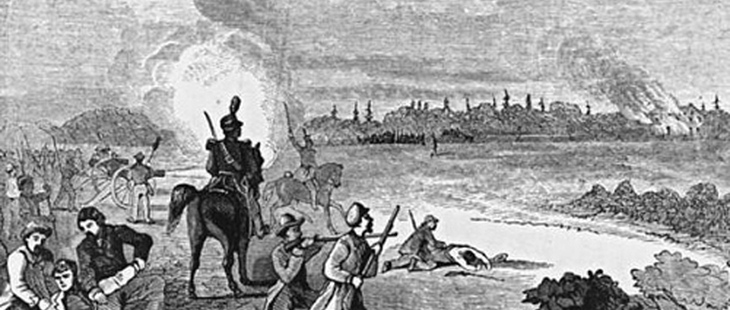
On Dec. 4 1837, Sir Francis Bond Head, feeling ill, retired early secure in the knowledge that the colony he governed was perfectly tranquil. The reformers and radicals of Upper Canada were agitators but, the lieutenant governor was convinced, they agitated alone: he thought it impossible for them to muster the necessary strength to launch an attack against the governing regime. In Lower Canada, Bond Head knew the situation was different. He happily acceded to Sir John Colbourne’s order that the majority of the regular troops in the Upper colony be dispatched to assist in the campaign against the rebels in the Lower. Assured of Upper Canada’s loyalty, Bond Head went even further and sent all the soldiers he commanded–leaving the colony almost entirely without formal defences. Bond Head was likely stunned when he woke early on the morning of the fifth to news that a rebel force was amassing on the edge of Toronto, then York. After moving his family from Government House, the panicked Bond Head armed himself to the teeth and, as he hastily assisted in organizing the militia, vacillated between panic and, characteristically, over-confidence. Lucky for him, the attacking radicals were in organizational crisis. Their leader, William Lyon Mackenzie, had hesitated. Despite Bond Head’s diminished troop numbers, he was able, for the moment, to hold onto the city. Crisis averted, albeit temporarily, Bond Head’s worry turned to another issue troubling him: a certain young woman had not yet been executed. The young woman was Julia Murdock. A couple weeks before the uprising, on November 24, Murdock, an attractive servant, was sentenced to be publicly hanged on December 19. Murdock had been found guilty of murdering her employer, a woman named Harriett Henry, ostensibly by administering rat poison to her mistress. Julia, who insisted she was innocent, admitted that she tried to steal silverware from one of Hariett’s friends soon after her employer’s death. Claiming that Hariett wished to borrow a few spoons, Julia’s clumsy larceny began with her waking Mrs. Henry’s friend at six in the morning–instantly arousing suspicion. Soon, after Hariett’s body was discovered, Julia was also found to be hoarding her veil and, perhaps, a few of her rings. A purloiner she may have been, but did that a murderer make? There was more damning evidence in the testimony of an assistant to the local apothecary, who positively identified Julia as the purchaser of a large quantity of arsenic a week before Harriett’s death. The evidence did not, however, get more specific than that. Throughout the trial rumours swirled, that perhaps Harriett’s abusive husband was the perpetrator, or, to escape the relationship, Harriett had taken her own life. It turned out that the circumstantial evidence was enough to convince the jury. They rejected alternative explanations and, in less than two hours, found Julia guilty. For taking a life, Chief Justice Robinson ruled, Julia would forfeit her own. When the authorities returned Julia to jail to await execution, Bond Head, or someone near him, took notice of the public mood. The jury, while it had convicted, also recommended mercy and mercy had been denied. “Her guilt,” wrote the governess of Sir Francis Bond Head’s daughter, “is proved beyond reasonable doubt, yet she persists in her innocence and being very young and pretty, there is a great deal of pity towards her.” That sympathy, it seemed, was particularly felt among the burgeoning radical movement. With discontent growing across the province, Bond Head and those around him became convinced that a plan was afoot to turn Julia into a martyr for reform. In Bond Head’s mind, the rebellion as he feared it would happen went something like this: first, assassination of the lieutenant governor; second, a levelling of the social hierarchy; and, third, disarming the state and empowerment the lowest orders. What disturbed Bond Head especially, was that he could also see these tendencies playing out in private life. Murdock was as much a social leveller as was Mackenzie. So, in his mind, killing her would send a message to all the other radicals: move on us and we will move on you. Hence it was necessary to kill the girl. But how strange that when the radicals eventually did mount a proper attack on December 7, they made no effort to spring Murdock from prison nor did they even mention her in their slogans or newspapers. She was a martyr in Bond Head’s mind only. No matter, on the 19th, after the first stage of the rebellion had reached its conclusion, he had her executed anyway. __ Simon Wallace writes our Standard Historical Society column each week.














